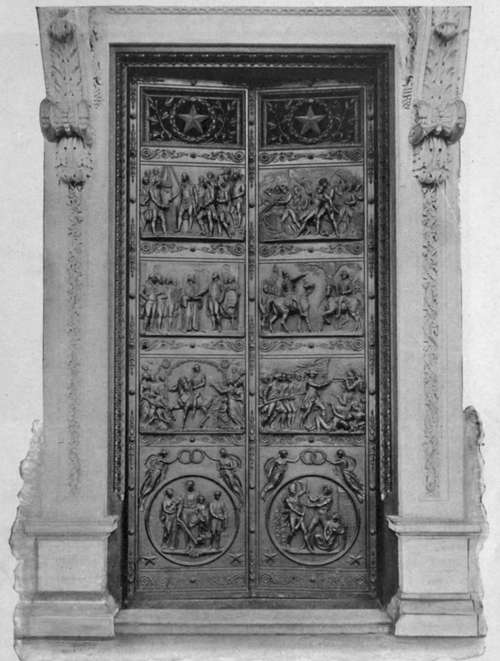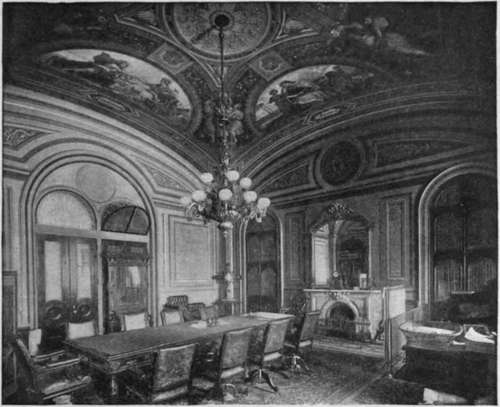Senate Bronze Doors
Description
This section is from the book "The National Capitol. Its Architecture Art And History", by George C. Hazelton, Jr. Also available from Amazon: The National Capitol Its Architecture Art and History.
Senate Bronze Doors
At the entrance to this hallway from the eastern portico of the wing are bronze doors designed by Crawford, which are said to be the first work of the character cast in this country,—at Chicopee, Massachusetts, by James T. Ames, in 1868. The plaster models were executed in Rome by William H. Rinehart. The designs of the panels relate to events in the Revolutionary war arid the life of General Washington. There are three panels and a medallion on each door. The top panel on the north door represents the death of General Warren at the battle of Bunker Hill. Below it is the rebuke of General Charles Lee by General Washington at the battle of Monmouth, New Jersey. The lowest panel depicts the storming of the redoubt at Yorktown by Alexander Hamilton. The medallion at the bottom shows a conflict between a Hessian soldier and a New Jersey farmer. The corresponding medallion on the south leaf of the doors represents Peace and Agriculture. Above this is General Washington passing beneath an arch of flowers at Trenton, New Jersey, while on his way to New York city to be inaugurated first President of the United States. The middle panel represents Washington taking the oath of office, administered by Chancellor Livingston. As the Supreme Court of the United States was not organized until September of the same year, the Chief Justice could not officiate; and this established the precedent whereby a President-elect can be sworn into office, in case of necessity, by another than the chief of that Court. The top panel shows the laying of the original corner-stone of the Capitol by Washington, with Masonic rites, on the 18th of September, 1793. The weight of these doors is 14,000 pounds. Their total cost has been $56,495.11, more than double the cost of the Rogers doors with which they are in no way comparable. Of this sum, $6,000 went to Crawford, the artist; the balance for the casting, materials, etc.
Above the doors, in the portico, is a high relief in marble, representing two reclining female figures. This was executed in Italy from designs of Crawford, for which he received $3,000. The figure to the right with the scales is Justice; upon her book is inscribed "Justice Law Order." Upon the scroll held by the figure to the left is written " History July 1776".

Senate bronze doors.

FORMER DISTRICT OF COLUMBIA COMMITTEE ROOM.
Continue to:
